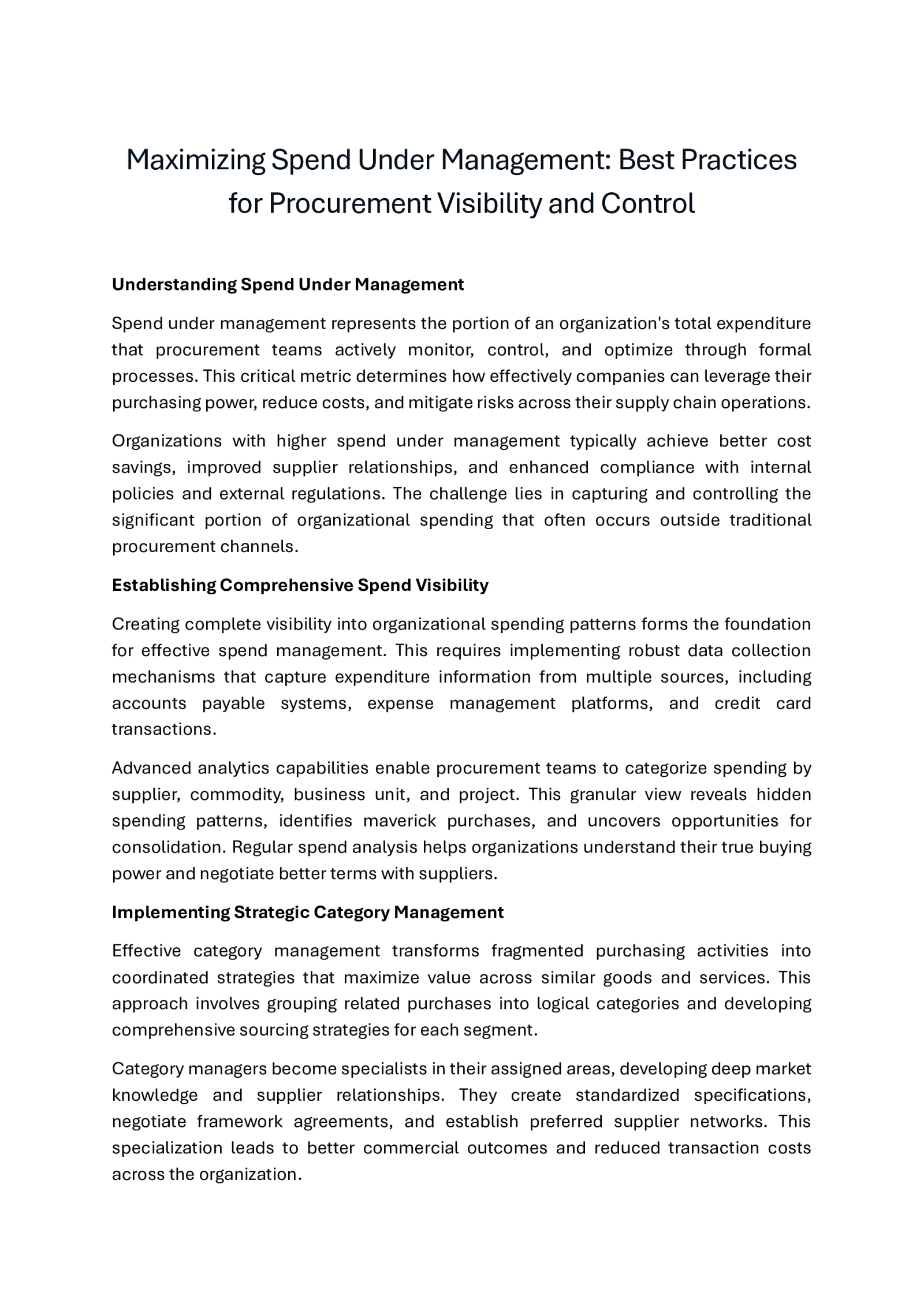Maximizing Spend Under Management: Best Practices for Procurement Visibility and Control Understanding Spend Under Management Spend under management represents the portion of an organization’s total expenditure that procurement teams actively monitor, control, and optimize through formal processes. This critical metric determines how effectively companies can leverage their purchasing power, reduce costs, and mitigate risks across their supply chain operations. Organizations with higher spend under management typically achieve better cost savings, improved supplier relationships, and enhanced compliance with internal policies and external regulations. The challenge lies in capturing and controlling the significant portion of organizational spending that often occurs outside traditional procurement channels. Establishing Comprehensive Spend Visibility Creating complete visibility into organizational spending patterns forms the foundation for effective spend management. This requires implementing robust data collection mechanisms that capture expenditure information from multiple sources, including accounts payable systems, expense management platforms, and credit card transactions. Advanced analytics capabilities enable procurement teams to categorize spending by supplier, commodity, business unit, and project. This granular view reveals hidden spending patterns, identifies maverick purchases, and uncovers opportunities for consolidation. Regular spend analysis helps organizations understand their true buying power and negotiate better terms with suppliers. Implementing Strategic Category Management Effective category management transforms fragmented purchasing activities into coordinated strategies that maximize value across similar goods and services. This approach involves grouping related purchases into logical categories and developing comprehensive sourcing strategies for each segment. Category managers become specialists in their assigned areas, developing deep market knowledge and supplier relationships. They create standardized specifications, negotiate framework agreements, and establish preferred supplier networks. This specialization leads to better commercial outcomes and reduced transaction costs across the organization.


